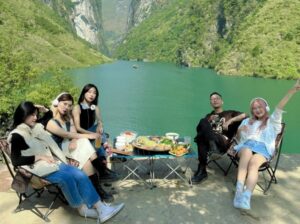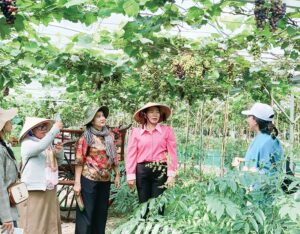On November 29, the United Nations Educational, Scientific and Cultural Organisation (UNESCO) inscribed "The art of pottery making of the Cham people" onto the List of Intangible Cultural Heritage in Need of Urgent Safeguarding, making it the 15th intangible cultural heritage of Vietnam to be recognised by UNESCO.
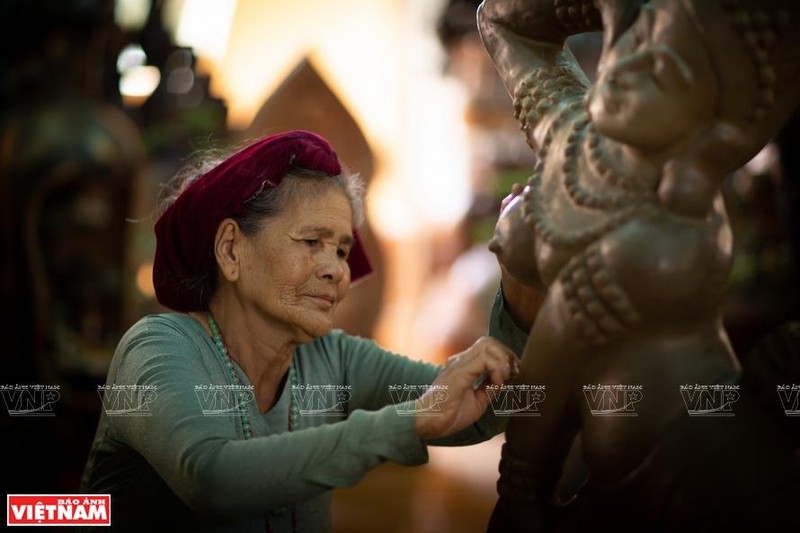
Artisan Truong Thi Gach, 80, finishes her creation of an Apsara dancer. (Photo: Vietnam Pictorial)
The craft of Cham pottery is now practiced mainly in the two villages of Ligok, in Bac Binh District, Binh Thuan Province, and Hamu Crok, in Bau Truc, Ninh Thuan Province.
The Bau Truc pottery village is home to nearly 600 households with about 5,000 Cham ethnic people. Legend has it that the ancestor of the pottery making craft is the wife of Poklong Chanh, and the craft dates back to the 12th century.
The Bau Truc pottery village is considered the oldest traditional craft village in Southeast Asia. Its ceramic products are imbued with the many unique features of the culture, life, and activities of the Cham people.
Phu Huu Minh Thuan, director of Bau Truc Cham Pottery Cooperative, said with joy that the villagers are happy that their ancestors’ craft has won UNESCO’s recognition. The elders in particular are excited and hope that the accolade will help to safeguard the traditional craft, whist the younger generation are encouraged to further promote the cultural quintessence of the Cham ethnic community.
There are no fixed moulds to produce Bau Truc ceramic products; they are created by pottery makers. The craftsmen utilise their creativity to turn clay into products of various shapes and sizes, with unique designs and patterns, making Bau Truc ceramics and other products.
The clay material for making pottery comes from along the banks of the Quao River, about 1km from the village.
After the rice harvesting season (three crops/year), villagers come to the rice fields and dig up a layer of clay from about 0.5m below the field’s surface. The clay is brought home to clean and soak in water. It is then mixed with white sand and other small particles in the proper ratio. The mixture is let dry and will then be stored for year-round production.
Dang Thi Lua, a 40-year-old skilled craftswoman in the village revealed that Cham ethnic girls begin learning to make ceramic products from the age of 12 to 15. As Cham ethnic group features a matrilineal society, so the craft used to be passed down from mother to daughter.
However, in recent years, customers have preferred large size ceramic products, weighing up to several tens of kilograms, which requires the strength of men. Therefore, the making of small products is no longer suitable, and the custom has been gradually changing, allowing more and more young men and middle-aged men to get involved in the making of pottery products.
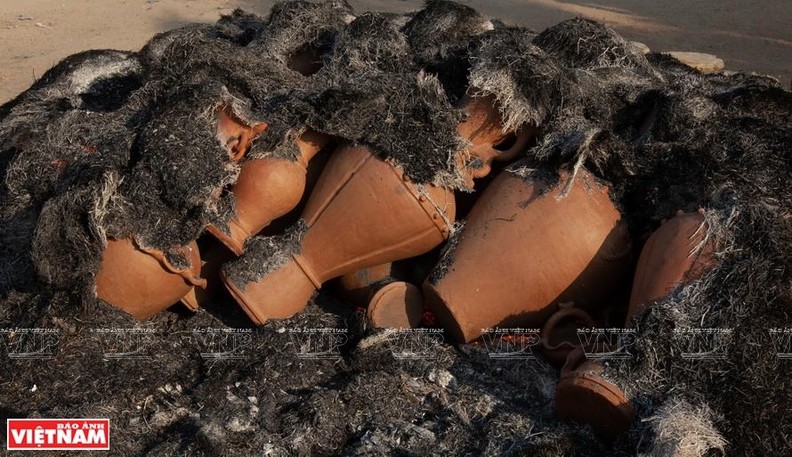
Pottery pieces after firing. (Photo: Vietnam Pictorial)
Bau Truc pottery products are not laid with enamel but dried and baked outdoor. The products are laid on a layer of rice husk and covered with wood and rice straw on top before being fire at about 800 degrees Celsius for 48 hours. The outdoor firing is believed to allow wind blowing to create streaks and unique colour shades for the final products, such as: red gold, rose red, black grey and brown.
Phu Huu Minh Thuan shared that the craft generates an average income of 200,000 to 300,000 VND per capita per day, depending on the craftsmen’s skill and the product quality. His cooperative provides jobs and stable living for 45 highly skilled labourers.
In recent years, the Ninh Thuan provincial authorities have invested more than 30 billion VND to improve the infrastructure in the Bau Truc craft village. However, the villagers are still confused about how to improve product quality, advertise their products, and seek consumption markets.
They have not yet received full support to promote their products at events outside the province as well as at trade fairs held abroad.
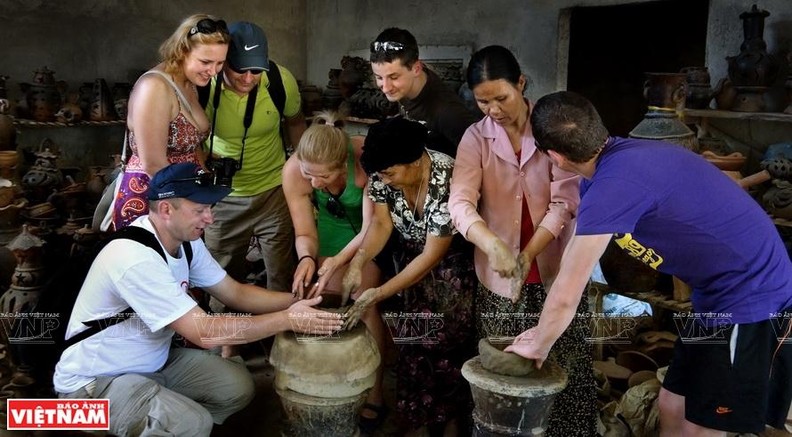
Foreign visitors try their hands at making Bau Truc pottery. (Photo: Vietnam Pictorial)
Phu Huu Minh Thuan stressed that the development of the craft village not only requires further investment in building more showrooms to promote products, but also improvements in human resources. The quality of the products can only improve once the craftsmen have qualified skills with artistic design skills and good hand-eye coordination.
On the other hand, the province needs to plan the raw material area so that people can get access to it more conveniently instead of finding clay by themselves according to experience and habits.
According to Vice Chairman of the Ninh Thuan Provincial People's Committee Nguyen Long Bien, UNESCO’s recognition is not only an honour but also places responsibility for leaders and people in the preservation and promotion of the craft.
In the coming time, the province will work to uphold the true values of the heritage, and integrate the practice of the craft with cultural and economic development of the locality so that it can generate further benefit for locals, especially for the Cham ethnic people in Ninh Thuan.
In the long term, the authorities will provide greater support for Cham people to advertise their products at major national and international fairs and cultural exchange events both at home and abroad.




